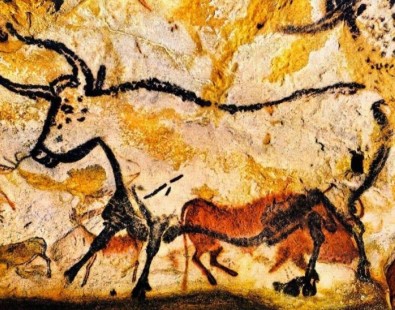12th July, 2025
A Paradise of Exceptional Richness
‘I pass from one valley to another in this sunny Périgord – land of memory-haunted ruins, captivating romance, and still more captivating truffles; but wherever I wander I have the rocks near me, flashing their entire nakedness under the blue sky, or drawing about their flanks a draping of foliage, which light or sombre as the leaves of oak or ilex, box or hazel, juniper or sumach, may dwell upon the note that rules both colour and feeling. I am now at Les Eyzies, in the valley of the Vézère: a paradise of exceptional richness’.
So wrote the Victorian travel writer Edward Harrison Barker just before the turn of the 20th century. Barker and his purple prose have been more-or-less forgotten, but the Dordogne (a region of south-west France named for its famous river) remains as captivating today as it was 150 years ago. A good part of the cycling and walking tours of the Dordogne are set in the Périgord Noir, named for its deep woodland, through which flows the Vézère. Upriver, the valley is a soft landscape, a mosaic of meadows and woodlands (the perfect habitat for black truffles).
Home to the Dawn of History
Nestled in the centre of the countryside is the small town of Montignac-Lascaux – home to what is thought to be the oldest human art in the world. Discovered during the Second World War, the caves at Lascaux are home to hundreds of paintings of animals, made by ancient humans over 17,000 years ago. Bulls, horses, and a strange bird-headed man are rendered in red and ochre pigments and in incredible detail. The original caves have been closed to the public since the 1960s to protect this very special place, but have been lovingly reproduced at Lascaux IV, a museum on the site. If you’re interested in seeing this monument to the enduring spirit of human creativity, make sure you book well in advance.
The caves at Lascaux are only one of many prehistoric sites in the Dordogne, and when you walk or cycle through the region you can see why our ancestors were attracted to this ‘paradise of exceptional richness’. In the middle of its course, around the little villages of Les Eyzies and Sarlat, the mighty Vézère has carved out dramatic limestone cliffs. Untold years of freezing and thawing has left long horizontal scars in the rocks, forming wide and sheltered ledges that are natural viewing platforms from which to take in the landscape. Cave-dwellers, or troglodytes, lived in these cliffs for thousands of years – and about two dozen people were thought to still be living like this when Barker was writing!
Dordogne Delicacies
A tour of the Dordogne would not be complete without a mention of their sumptuous food and wine. East of the Périgord Noir lies the Périgord Pourpre, named for its vineyards. The town of Bergerac is especially well known for its balanced and fruity red wines, light rosé, and delicate, dry white wines. When you are walking or cycling through the valleys, you may well spot fenced-off truffle plantations. Once a middle-class food, much local knowledge of farming these tasty fungi was lost during the First World War, when thousands of locals went off to fight – and never came back. Truffles take years to ripen, and require very specific conditions, so they called for an investment of time and money that many farms could not afford – thus they became a luxury food.
The other delicacy the Dordogne is known for is the rich and creamy fois gras (lit. ‘fatty liver’). This association is well deserved - nearly three quarters of all fois gras in the world is made in the Dordogne. It’s made from the livers of ducks or geese who have been force-fed through a process called ‘gavage’, but the welfare of the birds is well protected by French law – they live a stress-free life, are fed only on local produce, and spend most of their lives outdoors due to the region’s perfect weather (imagine!). If you’d like to meet a goose close-up, the Fest’oie is held in Sarlat in the first week of March every year. It is a festival devoted entirely to fois gras, and features live music, a 15-course banquet, and 200 geese running wild in the centre of the village.
If you want to have an adventure, but enjoy the finer things in life, you could do much worse than visit the Dordogne. Have your cake (or truffle) and eat it as you walk and cycle through an ancient landscape, with beautiful food and beautiful weather. You will be as happy as a goose!
Posted by: Will Garbett
Tags: Cycling holidays, Eat + drink, Hidden gems, History, Luxury specials, Walking holidays

